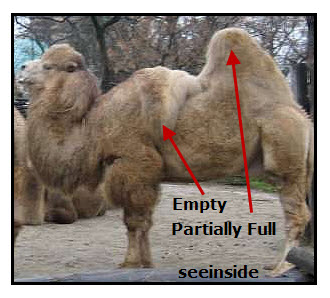
 Question:
Question:
How do animals adapt to their environment?
Answer:
I do not support the idea that animals purposely change their bodies over time so that they can better adapt to an environment.
Instead, I support the idea that animals that have certain physical characteristics are better adaptive to an environment.
For Example:
Camels can survive in a desert biome because of physical features, including these:
- Large feet that helps them to walk on sand without sinking in.

- Nostrils that the camel can open and close to keep out blowing sand.
- Long eyelashes to protect its eyes from blowing sand.
- Camels store fat in their hump, not water. If they cannot find food, camels use this fat to produce energy. When full of fat, the hump stands up. But when empty, it is just a lose flap of hairy skin.
- Unlike most mammals, the body temperature of a camel changes during the day, but generally is within a range of 93°F to 107°F (34°C to 41.7°C). Because of this change, the camel doesn’t sweat as much when the temperature rises. Sweating causes an animal to lose water, so the camel’s temperature changes helps it to conserve water.
- Camels have thick lips so they can eat the prickly desert plants with out being injured.
- The color of their bodies helps them to blend into their environment. This protects them from predators, such as wolves.
- Camel’s ears are covered with hair, even on the inside. The hair helps keep out sand or dust that might blow into the animal’s ears.
- The protruding bone on their forehead acts much like a sun-visor, which helps to keep sunlight out of their eyes.